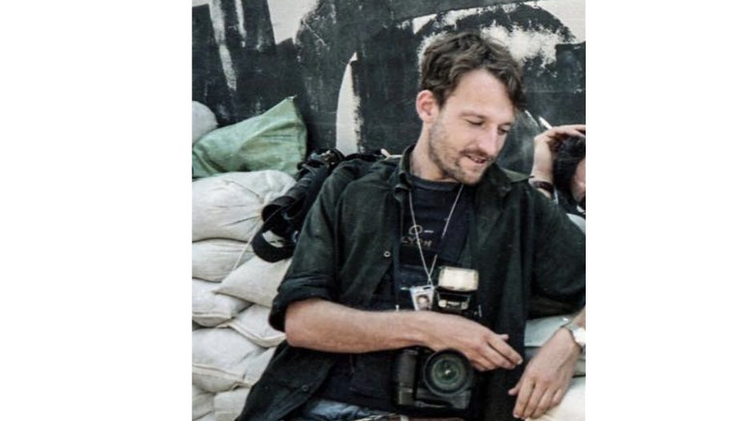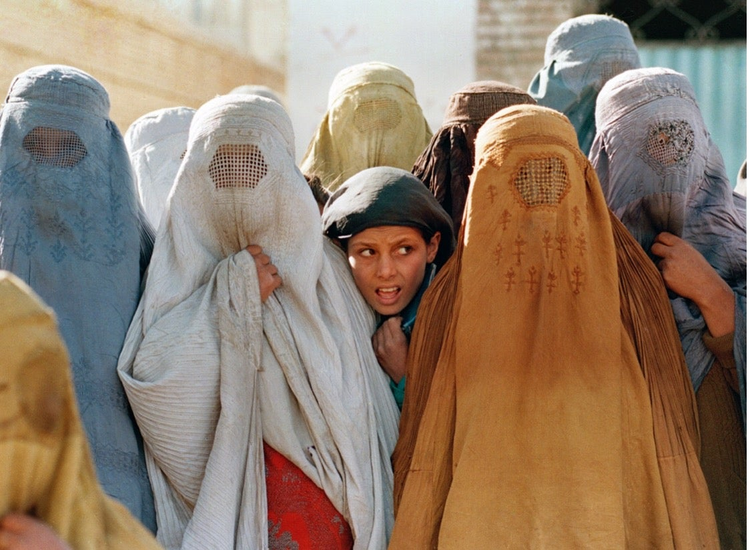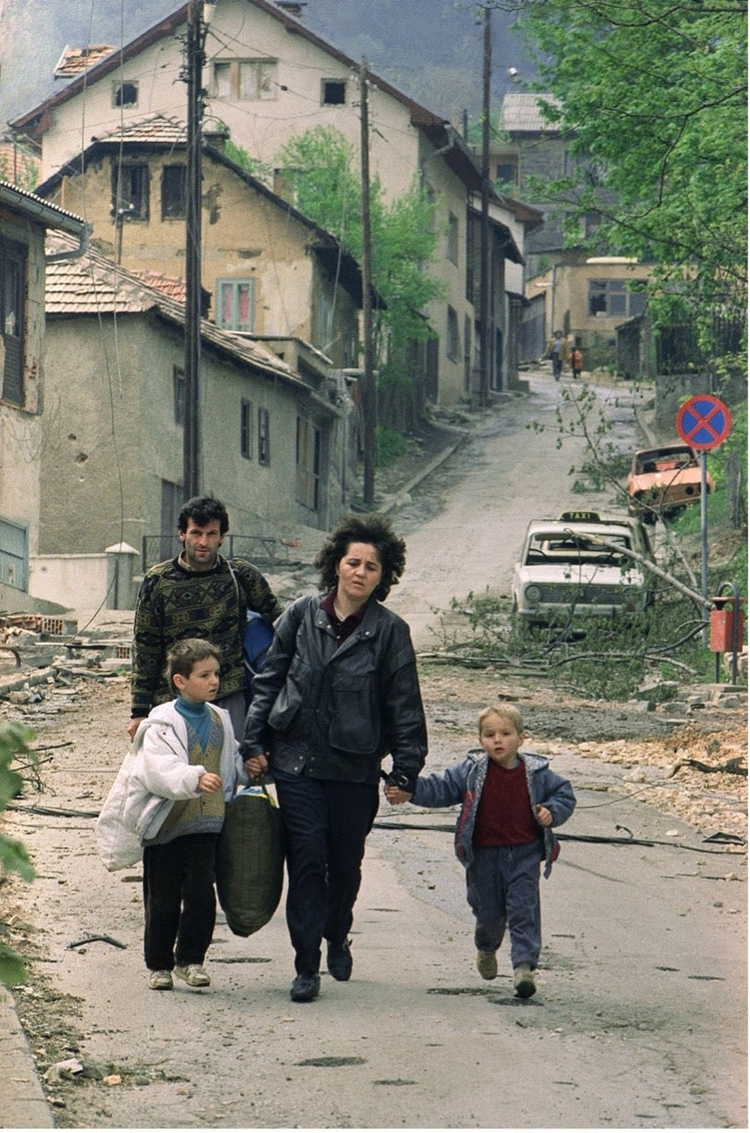Meet Santiago Lyon: Conflict photographer turned Content Authenticity expert

“As a lifelong journalist, I believe very strongly in authenticity and truth. I’ve dedicated 30 years of my life to it, often at great personal risk.”
Santiago Lyon didn’t know what his life and Adobe career would be like in 1989, when at just 23 years old he became Reuters’ Chief Photographer for Mexico and Central America. From snapping pictures of the civil war in El Salvador to being taken prisoner with a group of photojournalists in Iraq, Santiago’s story is riveting.
I sat down with Santiago, our Head of Education and Advocacy for the Adobe-led Content Authenticity Initiative, to learn how his background as a wartime photojournalist helps shape an important perspective he brings to the team that’s creating the future of content authenticity.
Can you tell us about your background and your career prior to joining Adobe?
I started working straight out of high school in Madrid in 1984, translating news stories from Central America into English for a Spanish news agency. Inspired by those stories, I decided to become a photojournalist and see for myself. I learned the trade in Spain, starting off mainly with sports and then moving into politics.
In 1989, at the tender age of 23, I became Reuters’ Chief Photographer for Mexico and Central America, based in Mexico City. I covered events like the Civil War in El Salvador, the U.S. invasion of Panama, and then the first Gulf War, where I was part of a group of journalists taken prisoner by Saddam Hussein’s forces in southern Iraq. We were held for a week, cut off from contact with the outside world, then released to the Red Cross in Baghdad and flown home. Later that year, I joined the Associated Press as one of a small group of photographers who were dispatched anytime there was any sort of trouble in Europe, the Middle East, or Africa. From 1989 to 1999, my work was nonstop coverage of war, conflict, unrest, and disaster around the world.
Along the way, I had many unforgettable experiences, some wonderful, some horrible. By the end I was exhausted, traumatized, and in need of a change. In 2001, I became a father and two years later, was awarded a yearlong mid-career Nieman Fellowship at Harvard University. During that year, I was hired as AP’s Director of Photography, which entailed leading a staff of 400 photographers and photo editors around the world, working with thousands of freelance photographers, partner agencies, and other image sources.
I left the AP after 25 years and, in late 2017, was hired by Adobe first as Director of Editorial Content and then as Director of Business Development for Adobe Stock. In February 2021, I joined Adobe’s Content Authenticity Initiative, heading up advocacy and education around this Adobe-led coalition of media and technology companies creating an open-source industry standard to verify an image’s provenance and authenticity.

A young girl peers out from a group of Afghan women wearing the burqa covering at a Red Cross distribution center in Kabul, Nov. 13, 1996. The Red Cross was distributing flour, coal, stoves, soap, candles, and matches to needy people as winter approached and temperatures dropped in the Afghan capital. (AP Photo/Santiago Lyon)
What were some of the most powerful stories you covered as a photojournalist specializing in conflicts?
Apart from El Salvador, Panama, and Iraq, I also covered the wars in Croatia, Bosnia, and Kosovo as part of the breakup of the former Yugoslavia, plus Afghanistan and Somalia. I covered 8 different conflicts over the course of a decade, in addition to numerous other disturbances, civil unrest, and natural disasters. (I also photographed Olympics, World Cups, kings, popes, and world leaders.)
All the stories affect you, of course, but the one that marked me the most deeply was the war in Bosnia, particularly the siege of Sarajevo. On many other stories, I was very decidedly a foreigner and an outsider. And while we can empathize with people everywhere because ultimately, we all share the human condition, the Bosnian War was taking place in Europe, not far from where I was born and raised. It was just shocking to see something like that going on so close to home. Seeing a lifestyle similar to mine being shattered by a particularly violent and cruel strain of nationalism using tactics that were almost medieval made it a tremendously challenging story to cover — we lived in Sarajevo with no water, no power, eating black-market food but still, unlike the locals, able to escape across the frontlines. It was made more difficult because very early in the fighting I made a decision with a small group of colleagues to move deeper into besieged Sarajevo when the rest of the world’s media had decided to pull out because the city was so dangerous. Within days, one colleague had been killed and another was severely wounded. We had to drive them out across the frontlines.
The story became a seminal moment in my life, and where I lost whatever residues of innocence I might have hoped to maintain. I went back to Sarajevo a couple of weeks later and spent months there. I was wounded by shrapnel from a mortar shell there about three months before the Dayton peace deal was signed in 1995, spent 6 months recovering, and then went straight back to Bosnia. I was very driven and committed to shining a light into dark and violent places.

Hustling her children down the road, a mother and her family leave their home on a hillside, May 8, 1992 in Sarajevo. Serbs fought Muslims in the capital of Bosnia-Herzegovina, turning the sky orange with the fires of explosions. (AP Photo/Santiago Lyon)
What is the Content Authenticity Initiative and how did it come about?
The Content Authenticity Initiative came about as Adobe’s response to the growing prevalence of misinformation and disinformation circulating online. CAI is an Adobe-led coalition of media and technology partners like The New York Times, Twitter, Microsoft, and others working to develop an open-source industry standard that will allow for more confidence in the authenticity of photographs (and then video and other file types). The goal is to create a community of trust, to let viewers know that they can believe what they see. Images published in traditional media and social media will eventually show a CAI credential or logo next to them in order to give the consumer more information about the provenance of the imagery, such as where and when it was first taken or created, and how it has been altered or edited.
We’re also working with human rights activists to ensure the CAI respects privacy and addresses security concerns. Because the work is open source it will be incorporated into some Adobe products like Photoshop, Lightroom, and Premiere Pro, but will also be available to other companies to incorporate into their products. It’s designed for the greater good, in line with our corporate values. It’s also voluntary — we can’t force people and organizations to use the CAI stamp of approval, but we hope that journalists in particular, as well as other institutions will embrace this opportunity to verify the truth of the images they create and use.
Can you tell us what you now do as the Head of Advocacy and Education for the Content Authenticity Initiative?
The advocacy part of my job centers around adoption and implementation of the Content Authenticity Initiative. I work to persuade media and other organizations to join the CAI, working with them on prototypes and helping them incorporate the technology that Adobe is developing into their products and workflows.
The education part of the job entails raising awareness about the CAI in our schools. First, we’re focused on photojournalism and journalism curricula, and then media literacy education more broadly in the undergraduate and post-graduate space. Eventually there will be an opportunity to incorporate it into the K-12 space.
I believe the dangers of misinformation are front and center in many people’s minds and I work to help people establish best practices around what visual information to trust and what not to trust. When the CAI does become a working tool and is implemented across the board, I’ll teach people how to use it.
How does your experience as a wartime photojournalist shape the perspective you bring to the CAI?
It’s two-fold. First, as a lifelong journalist, I believe very strongly in authenticity and truth. I’ve dedicated 30 years of my life to it, often at great personal risk. Secondly, because of my previous role as director of photography of the Associated Press, I have many contacts within the photojournalism and journalism industries and can leverage my deep knowledge of the industry as well my commitment to truth and authenticity.
Why is it so important for companies like Adobe to take steps to authenticate information or identify misinformation right now?
I think it’s critical to our democracy. Increasingly, people seem to have difficulty agreeing on basic facts, across both the political and social spectrums, and that’s really concerning. I believe that journalism is an integral part of democracy because, at its best, it holds those in power to account and informs people about what’s going on. But in recent years, the media landscape has become more fragmented and polarized — and this is not only in the United States. People all over the world are increasingly confused about what is or isn’t real. Part of that is due to the advent of social media, where you can bypass some of the best practices governing traditional media and spin the information to your advantage (or just make it up). Since we know that most people get their news through social media these days, it’s extremely important that organizations like Adobe find ways to combat misinformation and give consumers a chance to make informed decisions about what’s true.
What is Adobe’s ultimate goal for the CAI and how do we get there?
Our goal is to create a secure digital chain of information, embedded with CAI technology, for every digital image, so we can say with confidence where the image was taken and how it was altered. While we’re starting with photographs, this is also applicable to video content. It’s really all about truly reinforcing the notion that seeing is believing. We want the CAI label to become so ubiquitous that if you were to see an image without that label, you would wonder why. The authentication can come during three phases: capture, editing, and publication.
Eventually we want to have CAI technology embedded into devices off the shelf, so the next time you buy a camera or smartphone, you’ll be able to turn on the CAI capability if you want to (that’s authenticity at the point of capture). We want the technology to be easily implementable in whatever image editing tools you use (that’s editing), and for published files to include these visible credentials that will allow users to see more information (that’s publication). We’ll get there by familiarizing people with the CAI — showing them that in a world of deep fakes, it matters that they can know how, where, and when an image was made, and whether it has been altered.